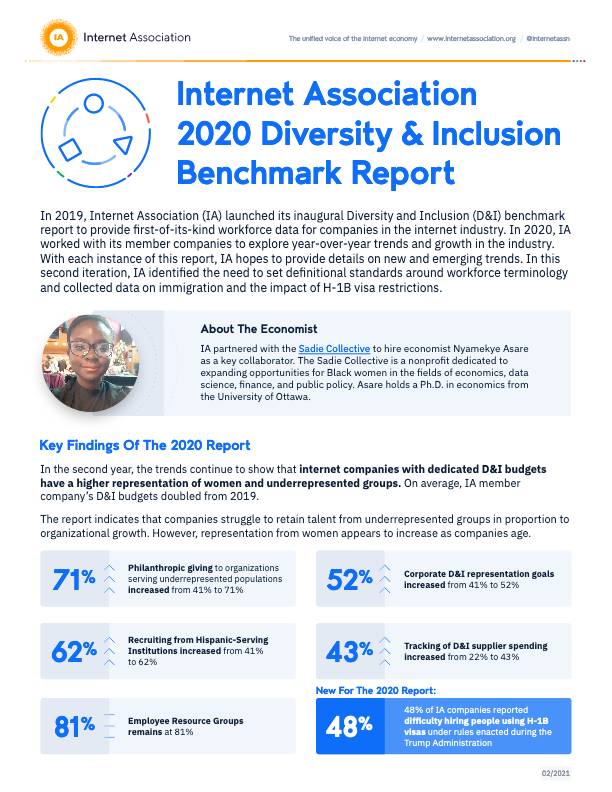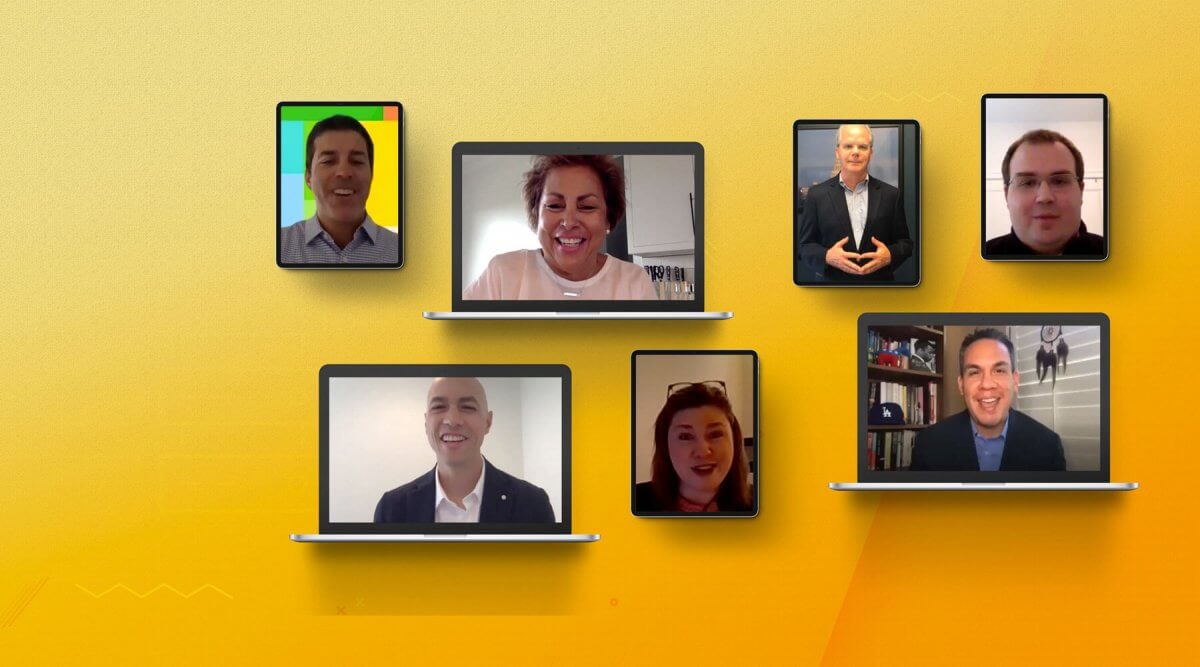As Women’s History Month comes to an end, Internet Association is taking a step back to reflect on the women who laid the foundation of the STEM fields, those who are propelling the modern industry forward, and current movements within the space which aim to pave the way for the next several generations of female leaders in science & technology.
For over 100 years, women have been paramount in advancing research, policy, and education within STEM. Grace Hopper’s lifelong career and vibrant attitude towards teaching gave us digital computers, standardized coding language, and generations of students with a passion for computer science. Hedy Lamarr’s imaginative approach to invention later gave us the indispensable developments of Bluetooth and GPS. Faced with abhorrent racial and gender barriers, Black women such as Katherine Johnson nonetheless stood at the forefront of innumerable intellectual contributions, eventually sending Americans into Earth’s orbit and landing astronauts on the moon.
These remarkable individuals, and countless others, kick-started the momentum for women of all backgrounds to amplify their voices in STEM. As we stretch well into the Digital Revolution, there is no doubt that the current tech space looks far different than it did several decades ago. Today’s leaders, such as Jennifer Lin, veteran engineer and VP of Product Management at Google, or Maisha-Gray-Diggs, MIT alumna and Senior Director of Talent Acquisition at Twitter, are representative of not only broad strides for women in STEM, but also shifts in workplace gender equality. Companies such as Google are now up to approximately a ⅓ female workforce, with a promising upward trajectory. However, women and many other communities still remain underrepresented, especially in some of tech’s most STEM-heavy roles.
Spearheading efforts to expand industry diversity, tech powerhouses such as Kimberley Bryant, founder and CEO of Black Girls Code, and Brenda Darden Wilkerson, President and CEO of AnitaB.org, are helping augment opportunities for women from underrepresented backgrounds. In addition, industry companies are constantly building out the architecture of inclusion. For example, 81% of IA’s member companies now equip employees with Employee Resource Groups (ERGs), with ERGs for women being one of the most common. ERGs strengthen community while also working with organizational leadership to raise awareness, promote change, and amplify professional development opportunities. These groups ensure that women’s voices are not just heard, but welcomed.
As we celebrate Women’s History Month and the many achievements of women in STEM, it is important that we collectively work for gender equity. While the statistics of women in STEM have room to grow, widespread efforts to create meaningful change show great promise of a more equitable tomorrow. IA and its members honor the legacies of the early women in tech and reaffirm our commitment to working with academic institutions, nonprofits, and policy experts in order to close tech’s gender gaps. The fields of invention and innovation gain their strength from diversity of ideas, many of which have come, are coming, and will continue to come, from women.











